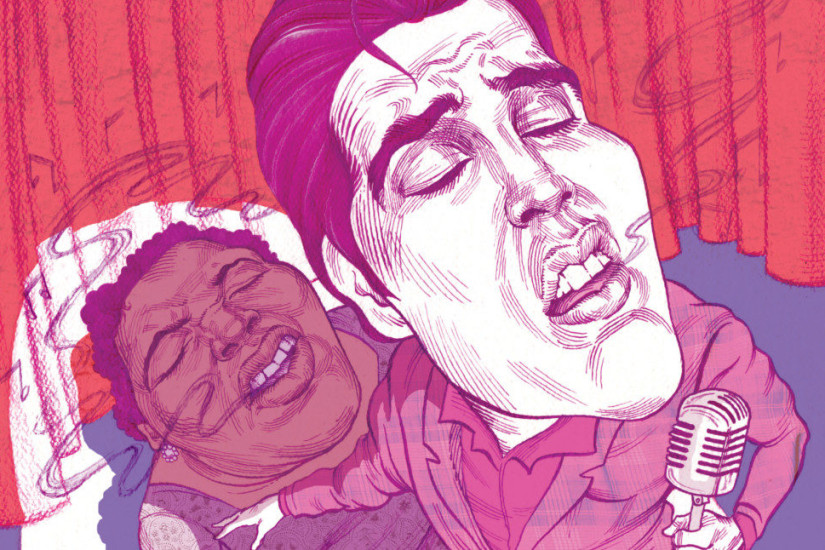It should be obvious that there is no such thing as a “pure” culture. Any “technology” the oblivious tweeter might have had in mind relies on a numerical system invented by Arabs. We wear textiles from central Asia; we eat “Italian” pasta brought to Europe from China in the 13th century; and we developed our earliest legal framework from East Africans. (And that “Italian” violin is a Persian derivative). So many of humankind’s most exciting achievements result from centuries of cross-pollination, and if the term cultural appropriation is to have any meaning, it can’t simply function to condemn the very exchange of ideas on which all progress depends.
“Appropriation” also suffers from an inherent theoretical difficulty: it depends on having a clear notion of cultural “ownership.” The term tends to be defined as “the adoption or use of the elements of one culture by members of another culture” – often with the added proviso “without permission.”
But how can a cultural group give “permission” to take or use a cultural product? It’s not as if each ethnic group has a council or bureaucratic agency that processes requests for cultural exchange like ASCAP licenses music. Anyone claiming to give “permission” is adopting authority they do not have; after all, what happens if other members of the culture disagree? Do we put it to a majority vote? Once we accept the core idea of “cultural appropriation,” that there is a coherent concept of cultural “ownership” that operates the way other forms of property rights do, all kinds of impossible questions are raised. These go beyond the usual “Can white men sing the blues?” (to which the answer remains, as always, “Yes, but usually not well.”) What do we do, for example, about New Orleans’ Mardi Gras Indians, who are black rather than Native American, but who wear elaborate feathered garb including—yes—headdresses and adopt tribal names? The Mardi Gras Indian tradition is meant to honor Native Americans, but it certainly never received “permission” from the U.S.’s indigenous population. If we accept the notions of ownership underlying “appropriation” analysis, we seem destined for either absurd logical extremes or arbitrary line-drawing.
And yet: discarding the concept entirely also seems like a mistake. Certain patterns of cultural exchange do seem to entail a kind of “theft,” and in considering whether cultural appropriation is a helpful idea, we should be careful not to throw a useful analytical baby out with its muddy conceptual bathwater, so to speak. A “property rights” framework doesn’t actually fit culture very well. Its boundaries are too amorphous, its creation too much a collective enterprise, for us to be able to divide up rights of proprietorship like parcels of land. But if we abandon the “appropriation” idea altogether, it becomes hard to describe what feels wrong about the misuse of tribal artifacts or the commercialization of artistic works made by marginalized groups.
So I’d like to propose what I believe to be a better approach than “cultural appropriation” for understanding problems with using other people’s culture. I think when we talk about appropriation, we’re really talking about two separate issues: first, an issue of cultural exploitation, and second, an issue of cultural disrespect.
